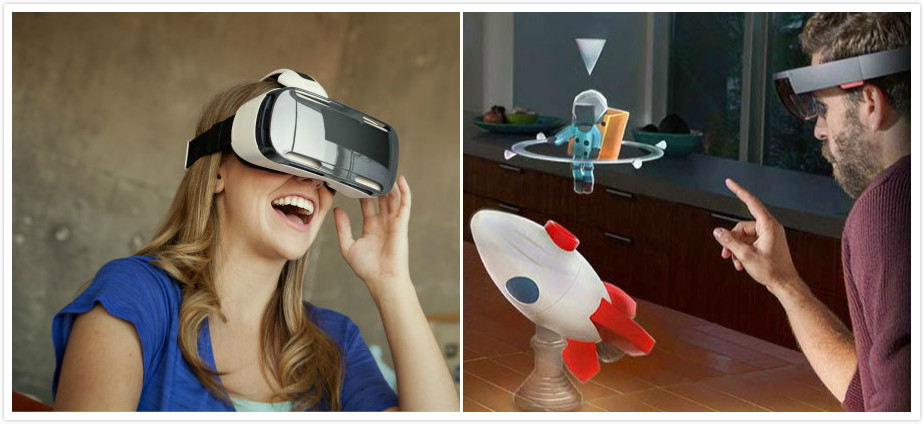Technology
is improving at a rapid pace. Many things are possible today that were only
in fiction movies 10 years ago. Augmented reality and virtual reality
are two of the ways
that tech is changing the way we look at the world. They are on the tipping point of
becoming commercial technology. As we can see, devices such as Oculus Rift
and Google Glass are already on
the market and available to all the users and developers. As a developer or
investor who wants to decide which side we should pick, we need to know a
little bit more about AR and VR.
AR and VR are not really competing for technologies at all, but rather complimentary technologies. They both serve slightly different functions and in all likelihood, both will have a big role in our future. AR’s future will be about adding information to our world. It will be the main way we gather and access information, such as looking up data about the object in front us, checking our calendar, and getting directions. VR’s future will be about experience. Virtual reality allows users to explore a world completely unrelated to the view in front of them. Instantaneous travel to any place imaginable, simulated time travel, VR will enable new ways of learning through immersion, understanding other people’s perspectives, and gaming.
Augmented
reality is defined as “an enhanced version of reality created by the use of
technology to add digital information on an image of something”.
Virtual reality is the
process of using computer technology to create a simulated environment.
It may be
artificial, such as an animated scene, or an actual place that has been
photographed
and included in a virtual reality app. Whereas virtual reality replaces
our vision, augmented reality adds to it. AR devices like the Microsoft HoloLens and various
enterprise-level “smart glasses” are transparent, letting you see
everything in front
of you as if we are wearing a weak pair of sunglasses. The technology
is defined for
completely free movement while projecting images over whatever we look
at. The
concept extends to smartphones with AR apps and games like Pokemon Go which
use our phone’s camera to track our surroundings and overlay additional
information
on top of it, on the screen.
AR and VR are not really competing for technologies at all, but rather complimentary technologies. They both serve slightly different functions and in all likelihood, both will have a big role in our future. AR’s future will be about adding information to our world. It will be the main way we gather and access information, such as looking up data about the object in front us, checking our calendar, and getting directions. VR’s future will be about experience. Virtual reality allows users to explore a world completely unrelated to the view in front of them. Instantaneous travel to any place imaginable, simulated time travel, VR will enable new ways of learning through immersion, understanding other people’s perspectives, and gaming.
For VR and AR to reach their expected potential, they will have to clear
some hurdles with
the average consumer. After trying various headsets, it became clear
that the issues with
weight, heat, wires and set up time need to be addressed sooner rather
than later. High costs and a lack of apps are also standing in the way of
consumer adoption. The
market is rising rapidly and we have not even harnessed the 10%
potential of these
technologies.
The coming years will be the hell of a ride!
The Virtual Techy
Reference:

VR and AR will definitely become important – if not necessary – tools for many types of industries that want to take their business to the next level. More and more future-oriented enterprises are looking for new and efficient ways to innovate and make their products and services outshine the competitors. Being an early adopter of upcoming technology can surely facilitate this process.
ReplyDeleteVirtual Reality Ottawa